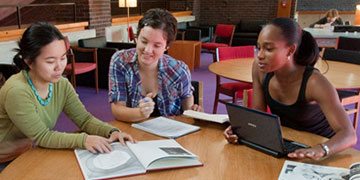To access this work you must either be on the Smith College campus OR have valid Smith login credentials.
On Campus users: To access this work if you are on campus please Select the Download button.
Off Campus users: To access this work from off campus, please select the Off-Campus button and enter your Smith username and password when prompted.
Non-Smith users: You may request this item through Interlibrary Loan at your own library.
Publication Date
2003
Document Type
Capstone
Study Type
EVS 300
Department
Environmental Science and Policy
Abstract
Educational institutions have the ability and the important responsibility to address issues of sustainable development and environmental issues within the student body. Students in Smith College residents alone consume large amounts of resources and make substantial contributions to the waste stream during the academic year. The goal of my project was to encourage students to question and adjust their environmental impact through improved infrastructure for environmental education in houses, in addition to new recycling and energy saving programs. In creating these programs, I met with Bob Pattee, the director of Smith Physical Plant, and Angie Fowler, the director of the Five-College Recycling Program and the Smith Earth Rep Coordinator. For this project, I created a paid student position under Bob Pattee that is responsible for educating Smith students about their environmental impact, specifically through biannual charts showing resource consumption over time from Physical Plant data. I also provided a monetary incentive and improved resources and organization for Smith house Earth Reps to be more effective in providing environmental information to their houses. I made several improvements to the recycling program in Smith residences, including a paid student position for recycling pick-up outside of student's rooms and improved advertising for the recycling competition between houses. Additionally, I created a program to reduce student energy consumption by supplying them with more efficient light bulbs to install in their rooms. Research has shown that environmental impact education can have a positive effect of individual behavior (Geller 1989; Buttel 1987 in Creighton 1998). These programs also provide incentives and make it more convenient for students to take responsibility for their resource consumption and waste contributions. I feel that I have created a strong base for improved environmental education in Smith residences, but awareness is only the first step to creating solutions. I would recommend that future programs be dedicated to encouraging a sense of place and environmental stewardship among students in the hope that they will take those values with them when they leave Smith.
Rights
© 2003 Kate Elmer
Recommended Citation
Elmer, Kate, "Sustainability at Smith Project: Environmental Impact in Smith Residences" (2003). Capstone, Smith College, Northampton, MA.
https://scholarworks.smith.edu/other_projects/81
Smith Only:
Off Campus Download


